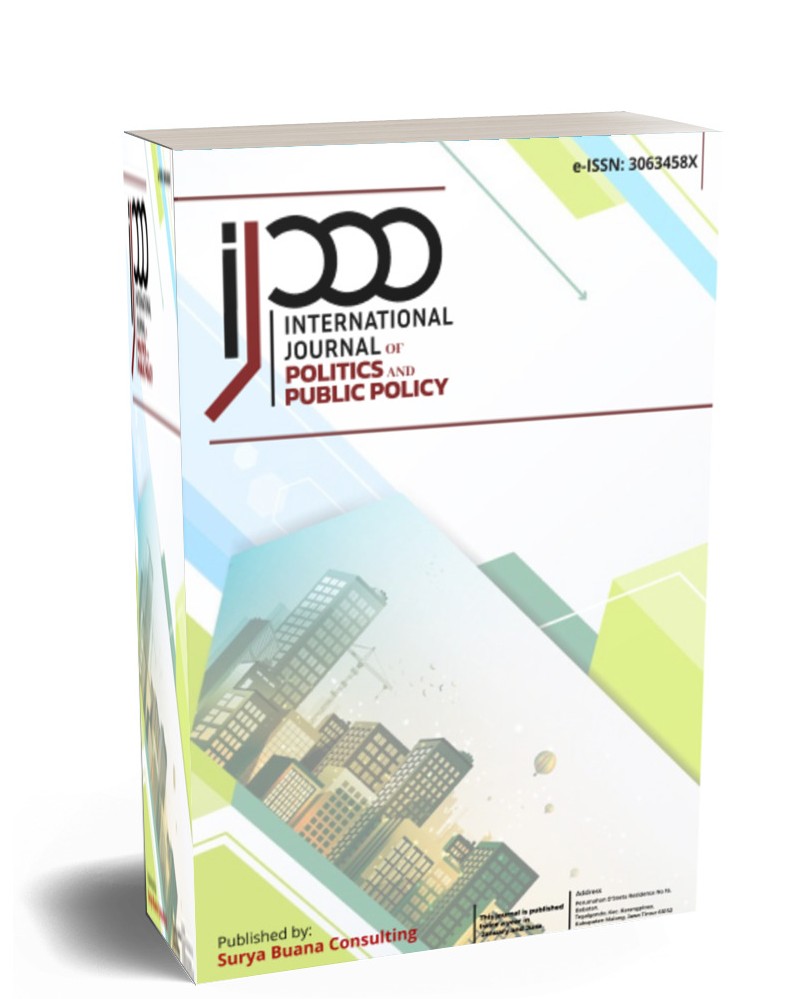Challenges and Opportunities of the Taliban in the Process of State Building in Afghanistan: Post-American Departures
DOI:
https://doi.org/10.70214/5ff6ym54Keywords:
State Building, Taliban, Afghanistan, Immara, ChallengeAbstract
The withdrawal of United States troops in 2020 marked the end of the 20-year War on Terror, triggering a quick takeover of Kabul by the Taliban. This article analyzes the potential and challenges in the process of “state-building” in Afghanistan under Taliban rule, which includes the establishment of political, social, economic systems, as well as national identity. Economic dependence on foreigners and the Taliban's status as a terrorist group were the main obstacles, while people's desire to improve their living standards and support for the Islamic political system, Imarah Islam Afghanistan (IIA), were the main drivers. A qualitative approach through literature review and in-depth interviews was used for this research. Findings show that the Taliban's classification as terrorists limits global support, although the IIA offers an institutional alternative. Domestic and global obstacles are expected to test the sustainability of the Taliban regime in building a stable state.
References
Abdul, F. (2022). From Taliban Rule to Taliban Rule: An Analysis of Nation-building Efforts in Afghanistan, the Role of Religion and its Outcome for Women and Minorities. Digitala Vetenskapliga Arkivet
Barfield, T. J. (2012). Afghanistan: A Cultural and Political History. NJ: Princeton University Press.
Bizhan, N. (2018). Aid and State-Building, Part II: Afghanistan And Iraq. Third World Quarterly, 39(5), 1014–1031. https://doi.org/10.1080/01436597.2018.1447369
Boni, F. (2021). Afghanistan 2020: The US-Taliban peace deal, intra-Afghan talks and regional implications, Asia Maior. The Journal of the Italian Think Tank on Asia Founded by Giorgio Borsa in 1989. PhD Thesis, The Open University, 465–478. https://oro.open.ac.uk/78505/
Brown, V. F. (2021). The US decision to withdraw from Afghanistan is the right one. Brookings. https://www.brookings.edu/articles/the-us-decision-to-withdraw-from-afghanistan-is-the-right-one/
Chesterman, S. (2002). Walking Softly in Afghanistan: the Future of UN State-Building. Survival: Global Politics and Strategy, 44(3), 37–45. https://www.tandfonline.com/doi/abs/10.1080/00396330212331343402
Dobbins, J. (2008). After the Taliban: nation-building in Afghanistan. Potomac Books.
Johnson, T. H. (2006). Afghanistan’s post-Taliban transition: the state of state-building after war. Central Asian Survey, 25(1–2), 1–26. https://doi.org/10.1080/02634930600902991
Marquette, H. (2011). Donors, State Building and Corruption: lessons from Afghanistan and the implications for aid policy. Third World Quarterly, 32, 1871–1890. http://www.jstor.org/stable/41341203
Miklaucic, M. (2023). State-Building 101: Hard Lessons From Afghanistan. Armed Forces & Society, 49(4), 982–988. https://doi.org/10.1177/0095327X221088873
Rodríguez, E. B. (2023). Why Did State-Building Policy Fail in Afghanistan? Open Journal of Political Science, 129–154. https://doi.org/10.4236/ojps.2023.131008
Salt, A. (2018). Transformation and the war in Afghanistan / Alexander Salt. Transformation and the War in Afghanistan / Alexander Salt., 2014, 98–126. https://doi.org/10.29171/azu_acku_pamphlet_ds371_4_s358_2018
Ullah, Hafeez, Ahmad, Riaz, K. M. M. (2020). Afghanistan: US-Taliban Peace Talks: CPEC Perspective. Conflict Studies Quarterly, 32. https://doi.org/10.24193/csq.32.4
Weigand, F. (2017). Afghanistan’s Taliban–legitimate jihadists or coercive extremists? Journal of Intervention and Statebuilding, 11(3), 359–381. https://doi.org/10.1080/17502977.2017.1353755
Downloads
Published
Issue
Section
License
Copyright (c) 2024 Siti Mutiah Setiawati (Author)

This work is licensed under a Creative Commons Attribution-ShareAlike 4.0 International License.
Authors who publish with this journal agree to the following terms.
1. Authors retain copyright and grant the journal right of first publication with the work simultaneously licensed under a Creative Commons Attribution-ShareAlike 4.0 International License. that allows others to share the work with an acknowledgment of the work's authorship and initial publication in this journal.
2. Authors are able to enter into separate, additional contractual arrangements for the non-exclusive distribution of the journal's published version of the work (e.g., post it to an institutional repository or publish it in a book), with an acknowledgment of its initial publication in this journal.
3. Authors are permitted and encouraged to post their work online (e.g., in institutional repositories or on their website) prior to and during the submission process, as it can lead to productive exchanges, as well as earlier and greater citation of published work (See The Effect of Open Access).


















.png?raw=true)
.jpg?raw=true)
